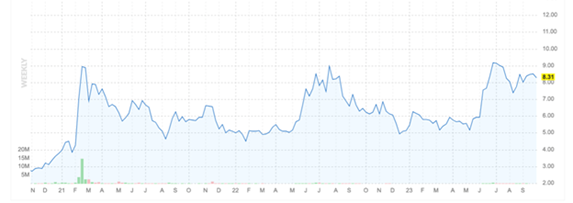QuickLogic (QUIK) leads a movement that is fundamentally altering the way microchips are designed, so as to meet demands for higher performance and lower power consumption, moderate skyrocketing chip development costs, and extend chip adaptability in the field, says George Gilder, editor of Gilder’s Technology Report.
The technology the company has mastered is called the embedded field programable gate array (eFPGA) and it’s coming to a chip near you. Field programmable gate arrays, as you may know, are chips whose actual hardware—the logic “gates” that perform the computation—can be altered even after they are deployed, customizing the chip for an evolution in its function or the new demands it must meet.
The hardware change is made via a software instruction (an updated “bitstream”) that reroutes the circuit connections across the “fabric” of gates. Today FPGAs occupy a small but crucial market (about $7 billion).
ASICs (application specific integrated circuits)—a much larger market at about $16 billion—were developed to optimize a chip for specific “fixed-in-silicon” functionality. Changes in an ASIC require a costly fabrication re-spin. The FPGA, on the other hand, was designed for reconfigurability in the field, allowing for yet unforeseen modifications.
The embedded FPGA can combine the advantages of both. It is not a physical chip at all. It is a piece of intellectual property (IP), a sub-design optimized to be added to—“embedded” in—the design of a particular “host” chip. Now your ASIC, already optimized for a particular function, can be further updated for future evolutions in needed functionality without the cost and time of a re-spin.
Embedded FPGAs can also bring similar and perhaps even more needed flexibility to the “system on a chip” or SoC. SoCs are remarkable packages that bring every function needed for a complete system onto a single chip.
For your smartphone, for instance, an SoC chip could combine an audio receiver, an analog-to-digital converter (ADC), a microprocessor, memory, and the input/output functions all on a single chip. Very small, very efficient, but also very predetermined since the components of the system cannot be modified individually as they might be if located on different chips. Embed an eFPGA into your system on a chip and even this highly specified and integrated device can be adjusted in the field.

QuickLogic’s approach exhibits the right combination of technology, know-how, decades of experience, and the ability to produce both IP and discrete devices. We see an abundance of growth with potential for significant (2-3X) appreciation of the company’s market capitalization, which is currently just $115 million. The shares are trading on a forward P/E of 23.4 in line with the Russell 2000 market comp.
Recommended Action: Buy QUIK.


















